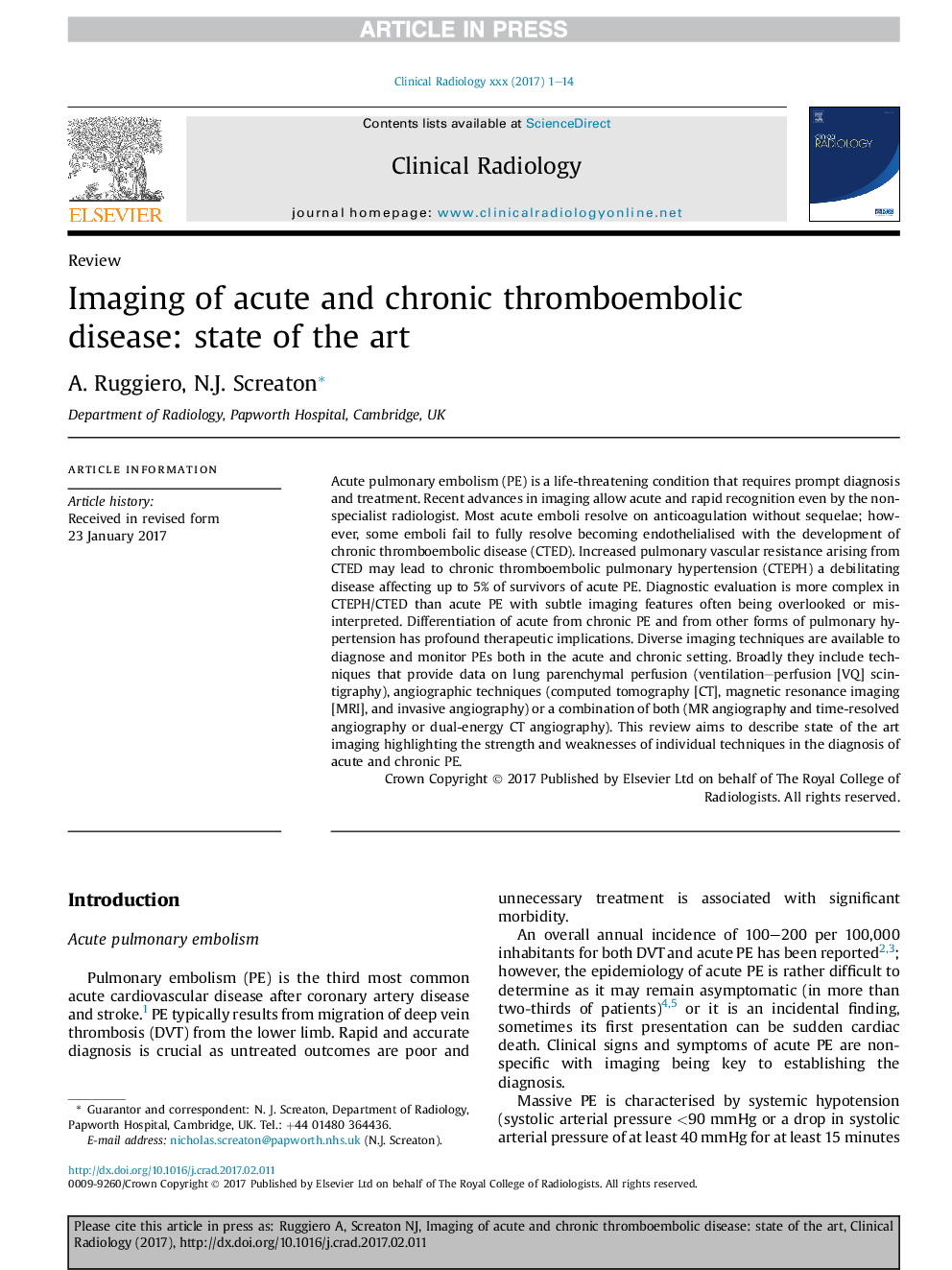| Article ID | Journal | Published Year | Pages | File Type |
|---|---|---|---|---|
| 5700604 | Clinical Radiology | 2017 | 14 Pages |
Abstract
Acute pulmonary embolism (PE) is a life-threatening condition that requires prompt diagnosis and treatment. Recent advances in imaging allow acute and rapid recognition even by the non-specialist radiologist. Most acute emboli resolve on anticoagulation without sequelae; however, some emboli fail to fully resolve becoming endothelialised with the development of chronic thromboembolic disease (CTED). Increased pulmonary vascular resistance arising from CTED may lead to chronic thromboembolic pulmonary hypertension (CTEPH) a debilitating disease affecting up to 5% of survivors of acute PE. Diagnostic evaluation is more complex in CTEPH/CTED than acute PE with subtle imaging features often being overlooked or misinterpreted. Differentiation of acute from chronic PE and from other forms of pulmonary hypertension has profound therapeutic implications. Diverse imaging techniques are available to diagnose and monitor PEs both in the acute and chronic setting. Broadly they include techniques that provide data on lung parenchymal perfusion (ventilation-perfusion [VQ] scintigraphy), angiographic techniques (computed tomography [CT], magnetic resonance imaging [MRI], and invasive angiography) or a combination of both (MR angiography and time-resolved angiography or dual-energy CT angiography). This review aims to describe state of the art imaging highlighting the strength and weaknesses of individual techniques in the diagnosis of acute and chronic PE.
Related Topics
Health Sciences
Medicine and Dentistry
Oncology
Authors
A. Ruggiero, N.J. Screaton,
